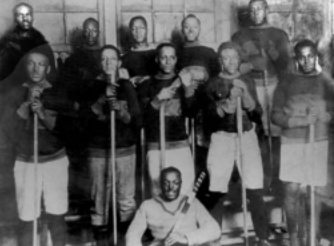What We Review
Introduction
African American athletes have played a vital role in shaping modern sports. Their achievements have not only entertained spectators but also challenged unfair practices. By examining how African Americans excelled in racially segregated sports, it becomes clear that these athletes used their talents to break down barriers and inspire progress. This topic is essential for AP® African American Studies because it highlights the connection between athletic achievements, social justice, and civil rights. Understanding this background offers valuable insights into the ongoing fight for equality in sports and society.
Transitioning through different eras, African American athletes achieved excellence during the 19th century, established leagues of their own, advocated for racial equality in the 20th and 21st centuries, and continue to influence contemporary discussions about social justice. Each contribution tells a story of perseverance and change, leading future generations to take bold steps toward a fairer playing field.
Contributions of African American Athletes in the 19th Century
Breaking Barriers in Sports
Between the end of the Civil War and the early 1900s, African American athletes faced numerous obstacles in mainstream sporting events. Racial segregation limited opportunities, yet determined athletes proved their skill even under adverse conditions. For instance, African American jockeys like Oliver Lewis and William “Billy” Walker made history in the Kentucky Derby.
- In 1875, Oliver Lewis won the inaugural Kentucky Derby, defeating other riders and demonstrating remarkable ability.
- Just two years later, William “Billy” Walker followed in Lewis’s footsteps by also winning the Derby.
These early victories challenged negative assumptions about Black athletes. In fact, most winners of the Kentucky Derby in the late 19th century were African Americans. Therefore, Lewis and Walker cleared a path for future champions to succeed in racially segregated sports.
The Colored Hockey League

In 1895, Black athletes in Halifax, Nova Scotia, founded the Colored Hockey League of the Maritimes. This league started more than two decades before the National Hockey League formed. For example, teams like the Africville Seasides and the Halifax Eurekas competed with a high level of skill.
- They introduced some strategies that shaped the future of hockey, such as allowing the goaltender to drop to the ice to block shots.
- Their popularity grew throughout the Maritime provinces, showcasing the potential of African American and Canadian Black athletes in competitive sports.
However, persistent racial discrimination limited the league’s growth. Yet, the Colored Hockey League remains an inspiring symbol, showing how Black athletes created successful sports institutions even when excluded from mainstream organizations.
Formation of the Negro Leagues
Racial segregation forced many African American baseball players to form parallel leagues. After the Civil War, these players established the early foundations of “Negro leagues,” where incredible talent flourished despite exclusion from Major League Baseball.
- By the early 20th century, the Negro leagues grew in popularity, creating space for skilled players like Satchel Paige and Josh Gibson.
- In 1947, Jackie Robinson became the first Black athlete to integrate Major League Baseball. His success earned him Rookie of the Year honors and showcased his resilience.
Jackie Robinson’s entrance into the MLB was groundbreaking. He faced racial slurs, threats, and prejudice. Nevertheless, his dedication shifted opinions about segregation in professional sports, proving that talent knew no color line and paving the way for further racial integration in athletics.
African American Athletes in the 20th and 21st Century
Advocacy Through Athletics
During the 20th century, African American athletes began using their public influence to confront racial inequality. Their performances shattered stereotypes and offered powerful messages of pride and resilience. One prominent example is Jesse Owens at the 1936 Berlin Olympics.
- Owens won four gold medals, defying racial ideologies in Nazi Germany.
- His incredible display of skill embarrassed Adolf Hitler’s racist propaganda regarding supposed “Aryan supremacy.”
However, upon returning home, Owens still faced discrimination, highlighting the contradiction between global athletic success and the harsh reality of segregation. His achievements became an early model for using sports as a platform to reveal social injustices.
Iconic Protests and Advocacy
By the mid-20th century, prominent African American athletes made direct political statements to protest racism. Muhammad Ali, one of the greatest boxers of all time, refused to enlist in the U.S. Army during the Vietnam War.
- Ali cited religious reasons and pointed to deep racial injustices in the United States.
- He famously stated, “The real enemy of my people is right here,” challenging the nation to confront its own prejudice.
This bold stance cost Ali his boxing license for a time, yet his protest energized debates about civil rights. Other Black athletes also took a stand against discrimination. For example, during the 1968 Olympics, sprinters Tommie Smith and John Carlos raised their clenched fists to symbolize Black pride and solidarity. They risked their careers to highlight racism, forever linking sports with civil rights activism.
Modern Movements and Continuing Inequality
In the 21st century, African American athletes continue using their influence to promote racial justice. Many have spoken out against police brutality and other forms of discrimination. One recent example is Colin Kaepernick’s peaceful protest during the national anthem in 2016.
- Kaepernick kneeled to draw attention to systemic racism and police violence.
- Other NFL players soon joined, sparking a nationwide conversation about the right to protest and the urgency of addressing injustices.
These modern movements echo the long history of African American advocacy in sports. Even so, inequalities persist, prompting further organization and calls for change. Therefore, these athletic protests, from Jesse Owens to Colin Kaepernick, serve as powerful reminders that sports can spark widespread social debate and inspire future reform.
Conclusion
African American athletes have been pioneers, whether on the racetrack in 1875, the baseball diamond of the early 20th century, or today’s football stadiums. Though the path to equality remains complicated, their continuous efforts have challenged stereotypes and created brighter possibilities for everyone. Whether riding victorious in the Kentucky Derby or calling attention to unfair policies, these athletes serve as compelling figures in the fight for social justice.
Therefore, it is critical to remember that the push for equality did not end with Jackie Robinson’s MLB debut or Muhammad Ali’s protests. Modern athletes still struggle against racism, creating parallels between past and present. This long history encourages students to reflect on sports as more than entertainment. Indeed, sports often reflect broader social issues and can be a place where determined individuals stand up for justice, unity, and change.
Required Sources and Their Context
1. Jockeys Compete at the Washington Races, 1840
- This source depicts how African American jockeys were participating in major horse races during the 19th century. It provides a window into the early roles African Americans held in sports, well before the Civil War ended. These jockeys paved the way for later athletes such as Oliver Lewis and William “Billy” Walker.
2. Tommie Smith and John Carlos Raise Clenched Fists During XIX Summer Olympics, 1968
- This iconic image captures the moment Tommie Smith and John Carlos used the Olympic podium to protest racial discrimination. Their clenched fists have become symbols of solidarity in the Black Freedom Movement. This protest is closely tied to the larger theme of athletes using their platform to advocate for social justice.
3. Seattle Seahawks Versus San Francisco 49ers, 2017
- This game highlights the continuing debate over peaceful protests in sports, as Colin Kaepernick had kneeled during the national anthem the season before. His stance encouraged other athletes to do the same, bringing these discussions into the public eye. The attention given to such games underscores how modern athletes carry forward a legacy of activism.
Each of these sources connects directly to the topics discussed above. They underscore the historical tension between athletic excellence and racial inequality and show how protests and achievements in sports inspire crucial social conversations.
VI. Quick Reference Vocabulary Chart
| Term | Definition or Key Feature |
| Colored Hockey League | A league founded by Black athletes in Halifax, Nova Scotia, in 1895 that predated the NHL |
| Negro League | A series of baseball leagues organized by Black athletes in response to segregation in MLB |
| Jesse Owens | An African American track and field athlete who won four gold medals at the 1936 Berlin Olympics |
| Colin Kaepernick | NFL quarterback who peacefully protested police brutality by kneeling during the national anthem |
| Reconstruction | Period after the Civil War (1865–1877) aimed at rebuilding the South and granting rights to freed people |
| Racial Segregation | The enforced separation of different racial groups in daily life, including sports |
| Jackie Robinson | The first African American to play in Major League Baseball in the 20th century (1947) |
| Advocacy | Public support for or recommendation of a particular cause or policy |
| Protest | A statement or action expressing disapproval of or objection to something |
| Social Justice | Fair treatment of individuals and groups within society, aiming to address inequality |
VIII. References for Further Study
- “A Hard Road to Glory: A History of the African American Athlete” by Arthur Ashe
- “Only the Ball Was White” by Robert Peterson (examines the history of the Negro Leagues)
- “The Heritage: Black Athletes, a Divided America, and the Politics of Patriotism” by Howard Bryant
- Documentaries on Jackie Robinson (PBS) and Muhammad Ali (Ken Burns series)
- Websites such as the Negro Leagues Baseball Museum website (nlbm.com)
These references offer deeper insights into the experiences of African American athletes and their enduring impact on sports and civil rights. They also encourage readers to appreciate the remarkable resilience these individuals have shown in the face of continuous challenges.
Sharpen Your Skills for AP® African American Studies
Are you preparing for the AP® African American Studies test? We’ve got you covered! Try our review articles designed to help you confidently tackle real-world AP® African American Studies problems. You’ll find everything you need to succeed, from quick tips to detailed strategies. Start exploring now!
Need help preparing for your AP® African American Studies exam?
Albert has hundreds of AP® African American Studies practice questions, free response, and full-length practice tests to try out.









